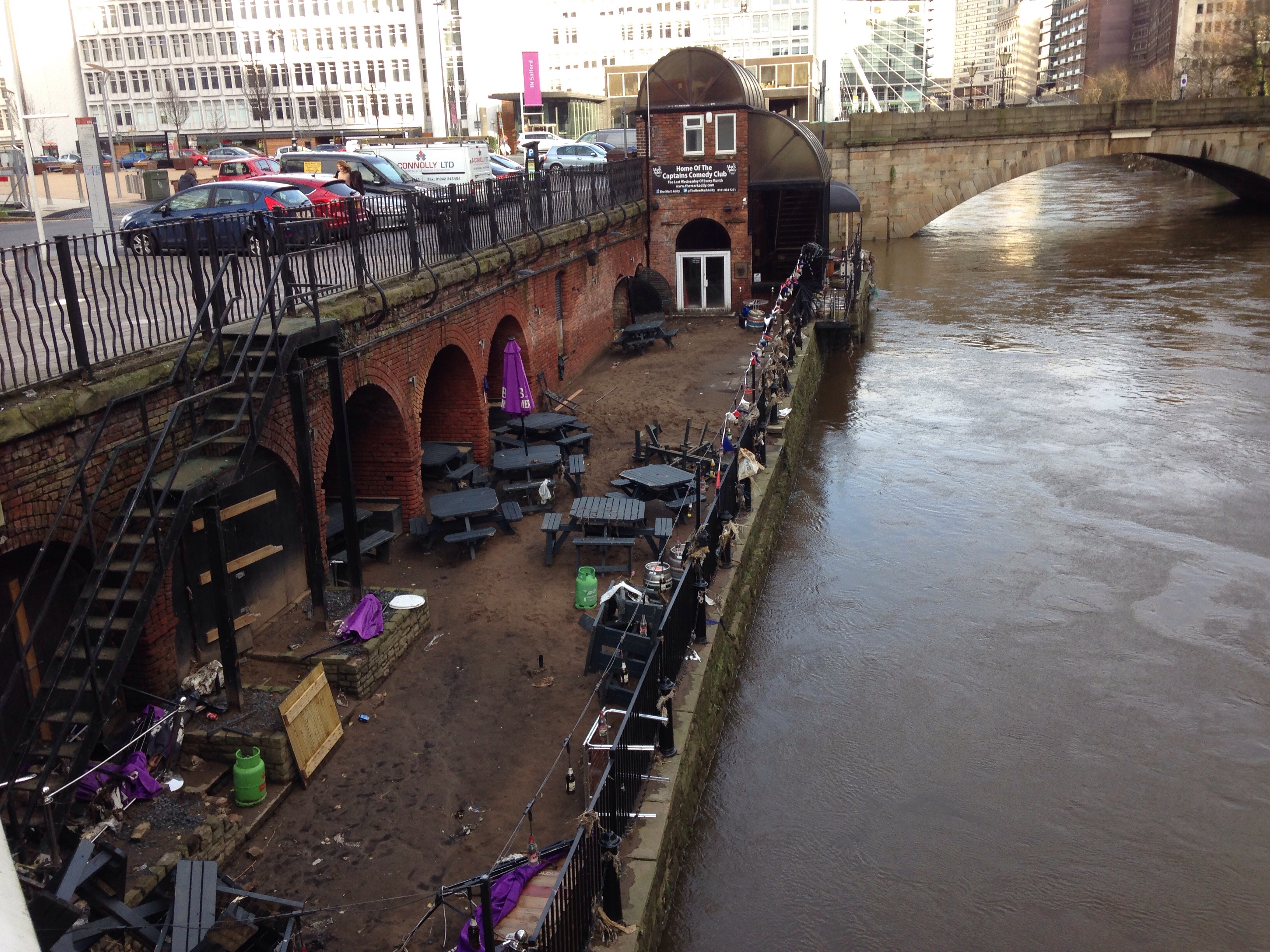The unprecedented rates of rainfall are only one of the factors that have contributed to the development of a flood wave passing down a river. Centuries of alteration to how our river catchments (or drainage basins) function has undoubtedly exacerbated the risk of downstream flooding in every river area in Britain.
According to Neil Entwistle, Lecturer in Physical Geography, University of Salford and George Heritage, Honorary Research Fellow, University of Salford who first published their findings on the Conversation,
“These alterations to the landscape have fundamentally altered surface and subsurface flow processes. They include a strategic network of drains and ditches cut by landowners and managers (often with government grants) to improve floodplain land for agriculture to prevent surface flooding and waterlogging, and dredging and embanking which helps to contain flow within a river. Improved drainage in our upland moors through the cutting of a network of drainage channels means that upland precipitation or snow melt is also now concentrated into channel networks more quickly and flows downstream into river valleys faster.”
” The role of the floodplain” say the pair, “would seem obvious in controlling downstream flooding yet it did not prevent flooding in Carlisle. It seems that in big events, attempts to increase the natural physical storage of water in the catchment is not going to stop urban areas flooding – but does this mean that natural flood risk management is ineffectual when it comes to preventing urban flooding during extreme events.”
The article has come in for some criticism with some saying that it lays the blame firmly at the door of the Environmental Agency but that is not the case at all Neil tell us
“In no way are we laying the blame at the door of the Environment Agency. We work closely with many of the staff directly involved with both flood risk and ecosystem management and would never call into question their commitment and professionalism. Initiatives are under way within the EA and elsewhere to develop a coordinated catchment based approach and what we are calling for is adequate science to ensure that decisions are robust.”
Adding that
” Gathering information during and immediately after floods is difficult and can seem secondary to responding to the immediate impacts but there is great value to capturing data that tells us more about the development of the flood in the catchment. If this becomes better recognised then maybe we will see a protocol for data gathering emerging that will feed directly into managing the catchment to mitigate the effects of future floods. It is the politicians that need to understand this and target funds appropriately.”
The authors say that ridiculous land drainage statements made by ministers who patently do not understand how catchments function to regulate flow in our rivers and a farcical relaxation of the management of small watercourses will only worsen the situation, leading to quicker and deeper flooding downstream.
The pair ask that The Environment Agency release all of its flood image archives to allow the role of catchment floodplain inundation to be quantified for all recent and historic floods. This will tell us whether, like the Rivet Eden, the floodplain is being fully utilised during extreme events or if physical capacity remains to store and slow floodwater.
“We must never lose sight of the fact that floodplains flood, stay flooded for a short time and then return the flood water to the channel as the main flow declines” says Neil.
“This is natural and the effect of natural flooding is often hard to detect after a few days and floodplain (mis)usage can resume as if nothing has happened. Preventing floodplains from flooding, in the many and varied ways we do, so fundamentally alters these natural flow dynamics during a flood, piling more and more water downstream more quickly so that even the most robust defences are placed under pressure and occasionally fail or are overtopped with devastating consequences. Lets support the efforts of the Environment Agency and collect better data, the two are not mutually exclusive!”







